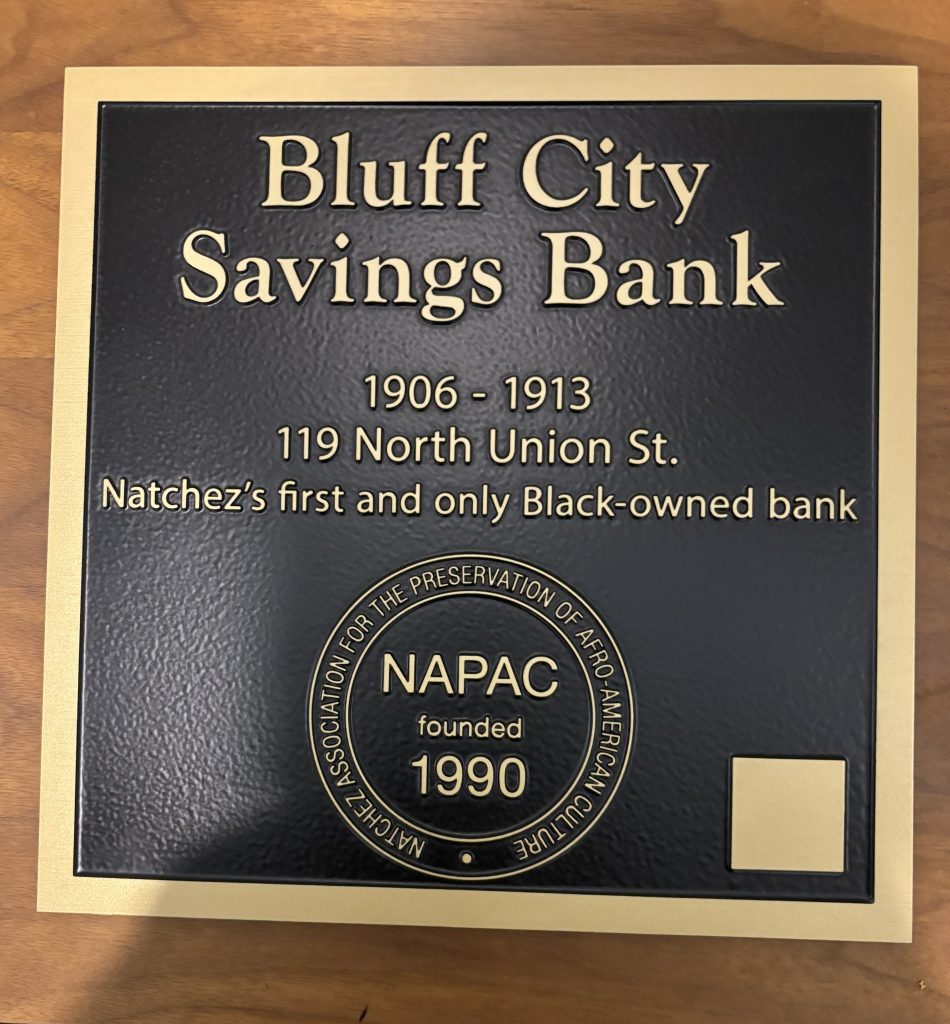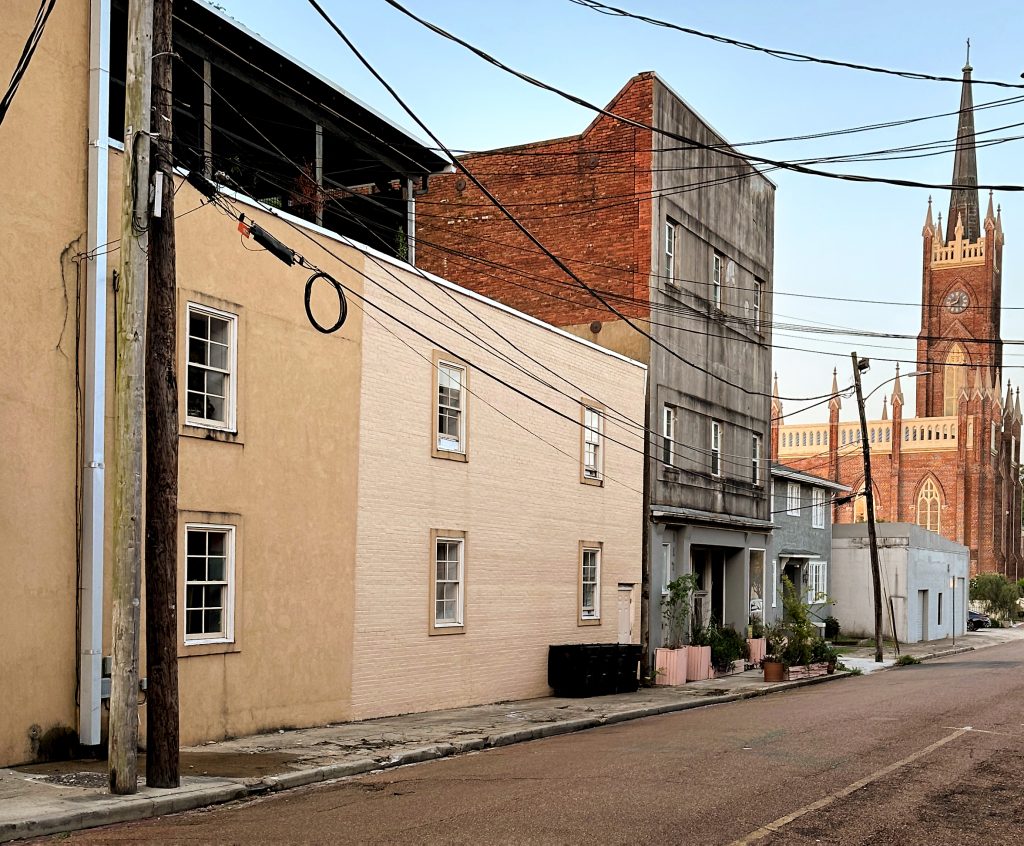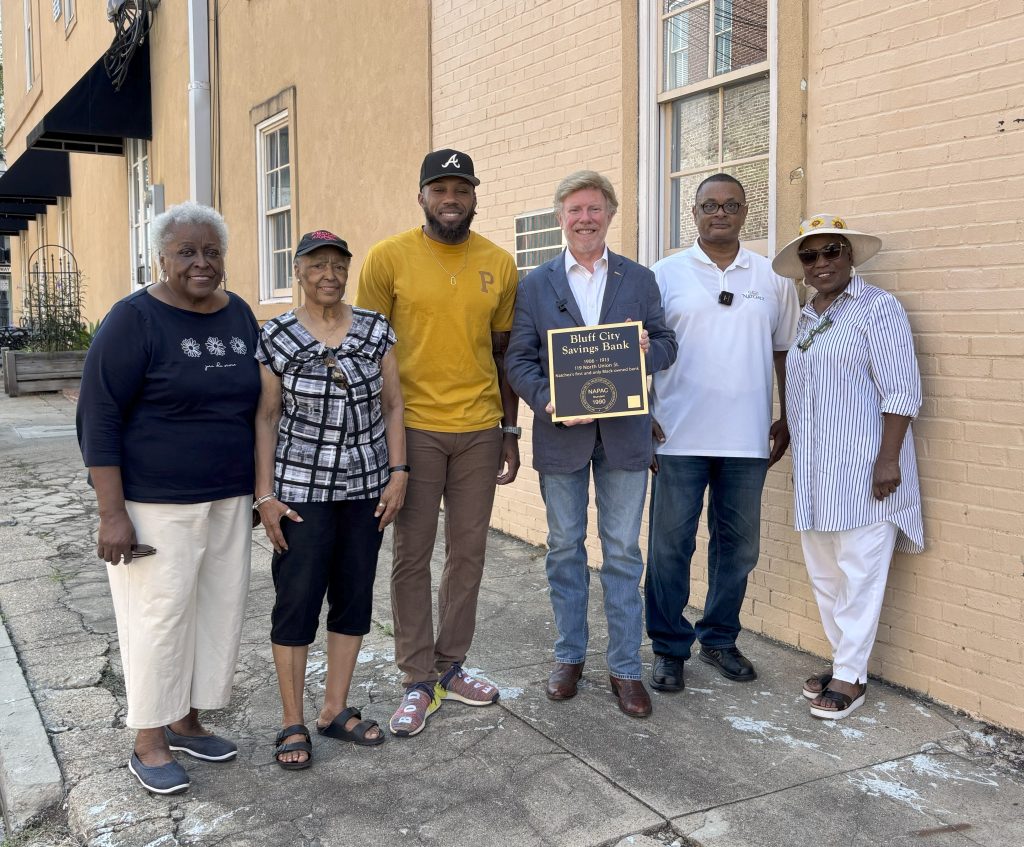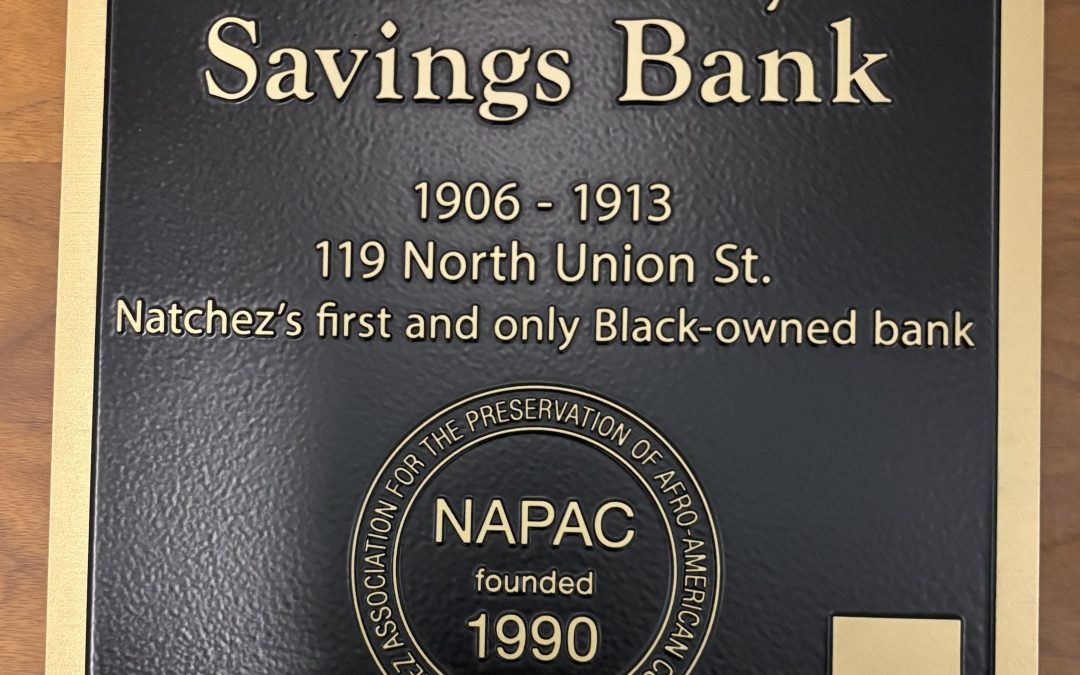By: Roscoe Barnes, III, Visit Natchez

This marker will soon be mounted at the Natchez Manor Bed and Breakfast at 600 Franklin St. It will appear on the side of the building facing North Union Street.
The former site of Bluff City Savings Bank, the only Black-owned bank in Natchez, now has a historical marker that honors the history of the bank, which operated from 1906 to 1913 at 119 N. Union St.
Mayor Dan Gibson on Friday presented the marker on behalf of the City of Natchez to Eric Berry, who co-owns the Natchez Manor Bed and Breakfast, 600 Franklin St., with his family. Gibson said the marker will be mounted at a later date on the side of the Natchez Manor building.
The historical site is now part of the city’s Self-Guided African American History tour, which has a total of 30 sites. The marker was a joint project of the city and NAPAC museum with assistance from Visit Natchez.

The original site of the building that housed the Bluff City Savings Bank was located to the left (or north) of the building with the pink flower pots in front. This three-story building was once a Natchez fire station. Photo by Ben Hillyer.
The bank’s original building, which no longer exists, was located on the north side of the three-story building on North Union that once served as a fire station. Today, that space is occupied by the rear addition to the Natchez Manor, facing North Union.
Berry, a former NFL football player, said he was surprised and very pleased to learn about his building’s connection to the Bluff City Savings Bank.
“I feel like I’m a part of history and upholding the history, legacy, and heritage of Natchez,” he said. “When I got the notice that this was the first Black bank in the city, it was a pleasant surprise to me. I’ve been doing research all over the country and all over the Southeast. Discovering this history has been liberating. I’m excited to be part of it.”

Mayor Dan Gibson recently presented a historical marker to Eric Berry that honors the legacy of the Bluff City Savings Bank, Natchez’s only Black-owned bank. From left are Dora Hawkins, Jacqulyn Williams, Berry, Gibson, Dr. Roscoe Barnes III, and Thelma Newsome.
Gibson said the story of the bank is a significant piece of Natchez’s history. He noted Dr. John Bowman Banks, the city’s first Black physician, played an important role in the founding of the bank. “Dr. Banks obviously was a pillar of our community and indeed a trail blazer,” Gibson said. “It was his vision to create this bank.”
The history of Dr. Banks is regularly shared at the Dr. John Bowman Banks Museum, which is owned and operated by Rose Hill Missionary Baptist Church. Representatives of the museum attended Friday’s presentation to show their support for the new marker. The representatives included Dora Hawkins, Thelma Newsome, and Jacquelyn Williams.
Bluff City Savings Bank was founded by a group of prominent Black men with backgrounds in medicine, business, and education. In addition to Dr. Banks and Dr. Dumas, the co-founders included Professor J.R. Ross, Professor George Washington Brumfield, Professor Samuel H. Owens, and Walton Barland.
The bank’s opening occurred at a critical time for Blacks, who were living under Jim Crow. It was one of nine Black-owned banks in Mississippi.
“Bluff City became an important source of small, short-term loans,” wrote Shennette Garrett-Scott in the publication, “’All the Other Devils this Side of Hades’: Black Banks and the Mississippi Banking Law of 1914” (Cambridge University Press, Jan. 12, 2022). “Farmers, for example, could get $40 or $50 using their mule, livestock, and farm equipment as collateral.”
Page Ogden, a retired banking professional, described Bluff City as a “fairly loaned up bank as reflected in the ratio of its loan deposits in their statement of condition.” He said it was a small bank that most likely focused on loans for houses and other consumer type loans. “It was all about the business of supplying the local needs in the black population,” he said.
The bank closed in 1913. In the January 1914 issue of The Crisis, the magazine reported:
“Bluff City Savings Bank, of Natchez, Miss., a colored enterprise, has been closed. The bank is not insolvent, but the failure of a white bank in the same town caused a run upon the colored bank, and it was closed until the property in which the money was invested could be converted into cash.”
Ogden said the fear in 1913 was understandable given the times. “In those days, there was no FDIC (Federal Deposit Insurance Corporation),” he said. “Mississippi was primarily a rural state and there was a lot of suspicion of banks to begin with. Scares were common.”
Mimi Miller, executive director emerita of Historic Natchez Foundation, said the bank “went into receivership and Dr. Dumas acted as the receiver to make sure that investors got back their money and that loan defaults were properly executed, and the properties resold.”
Note: An article on the bank titled, “This History is Important: Remembering the Bluff City Savings Bank,” appeared in the July/Aug 2023 issue of Natchez Magazine.

